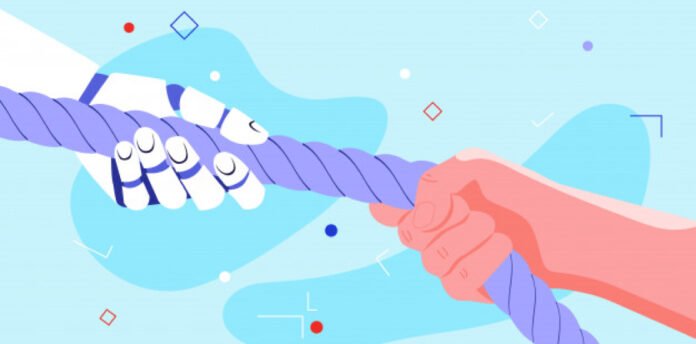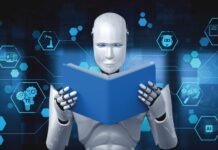Managing skills across an organization can be complicated and challenging. Learn how you can support your company’s future growth by better understanding your talent.
Managing skills across the organization can be a messy business. While new skills are becoming required as fast as new technologies are emerging (hint: at an exponential rate), the actual skills associated with job requirements, such as “grow social media market share” or “streamline product sales,” require a detailed understanding of the tasks and capabilities that will effectuate those goals. Translating skills from one job to another or from one organization to another can be both an expensive proposition and one fraught with error.
Just like the Rosetta Stone found in the Middle East that was instrumental in deciphering Egyptian Hieroglyphs by analyzing it against the other writing systems on the stone (Greek, demotic), wouldn’t it be great if there were a “Rosetta Stone” for translating skills?
The complex and time-consuming nature of keeping skills up to date while capturing the many capabilities of the entire employee population has led many organizations to invest tens or even hundreds of thousands of dollars towards developing skills and competency frameworks to meet their unique organizational needs.
Understandably, this complexity has other organizations hesitant to deploy such frameworks.
Yes, managing skills is a messy business. A common way to understand and translate them is needed if we want to more effectively and intelligently connect people, jobs, resources, and opportunities, both for our own organizations and for individuals as they move between organizations.
Why skills matter
Aligning talent to organizational strategy needs is at the core of human capital management and requires all talent processes working in tandem to achieve that goal. But business and technology are evolving at a frantic pace and, hastened by the impacts of the COVID-19 pandemic, understanding the latest skills available to and required of the workplace is more important than ever before.
Skills are becoming the basis for all talent processes with the promise of ensuring a more effective and equitable approach to hiring, career mobility, opportunity matching, education, and job transfers. A focus on skills over specific job titles supports transferability, a phenomenon seen during 2020 as scores of workers from various sectors including the airline industry, forced to furlough due to the pandemic, shifted into healthcare jobs given their emergency medical training skills. Governments and industry leaders are moving toward skills-based hiring, placing greater emphasis on transferrable skills and experience over earned degrees to ensure greater workforce agility. According to the World Economic Forum, over the next decade, more than 1 billion jobs worldwide will be transformed by technology, and the effects of the 4th Industrial Revolution will have created over 133 million new jobs – with new skills – in the 2 years leading up to 2022.
Simple is not easy
Despite the increasing focus on skills and skills-based hiring, there is still a significant gap in how skills are understood, maintained, and leveraged in today’s rapidly changing environments. Individuals and business leaders alike have seemingly simple questions that remain difficult to answer.
From the organization’s perspective, HR leaders and managers are looking to answer critical questions, including: What skills exist in the organization? Who has the skills we need? Where can we upskill resources and where should we hire for skills? How do we know we can trust the skills within individuals’ profiles? Do we have the talent supply to match our talent demand, now and for the future? How do we implement faster cycles of re-skilling to meet the needs of the market?
From an individual’s perspective, skills are the currency of the job market, yet they wonder: How can I best present my valuable skillset optimally to the job market if I don’t understand the latest or most relevant terminology for skills used today? How do I know what skills are in demand and what training and experiences do I need to grow those skills? What skills development should I focus on to drive new opportunities to me? How do I ensure the skills I have can be securely communicated to current and future employers, and fully trusted? How do I augment my capabilities in the face of automation?
What’s needed for businesses and individuals alike is a new approach to skills identification, management, and development – one that is dynamic, intelligent, trusted, and pervasive not just across the enterprise but across the global labor market.
Creating the Rosetta Stone of skills
The first step in addressing the inherent challenge of managing skills is to ensure you understand them. Then it’s all the many ways different words and phrases can describe the same skills, how they relate to one another, how you can detect skills from unstructured information like cover letters and text within resumes, derive the types and level of skills from those and similar sources, and infer skills based on attributes you know about an individual, about a job description or even a job title.
Soon, it won’t matter how many different ways a skill is described or if some are presented with misspellings. With the emergence and evolution of artificial intelligence and deep learning engines, like the Rosetta Stone itself, these new dynamic adaptable skills inventories enable an understanding of skills and skills-related data. In fact, such deep learning engines obviate the need for traditional skills frameworks, allowing new taxonomies to grow organically in real-time based on real-world relationships, changing and adapting over time as new skills, jobs, and relationships are understood.
And because each organization is unique, the best approaches in this new AI-driven skills management will require taking these global taxonomies and ontologies, tailoring them for each organization, and ensuring they reflect the company’s unique DNA, including jobs, skills, processes, culture, and people. In this way, skills recommendations and their enrichment of profiles and talent processes immediately become relevant and valuable to the organization.
This is important because, as already mentioned, skills and the need for new skills are changing rapidly. According to research firm Gartner, the number of skills required for a single job is increasing 10% every year and 33% of the skills present in an average job posting in 2017 won’t be needed this year. With the latest technologies applied to skills management, organizations will have the relevant foundation necessary to detect, understand and manage skills information across their enterprise while encouraging their workforce to quickly gain these skills for their roles.
Now that we understand skills, what’s next?
Understanding skills and having access to a better, dynamic classification of skills is the starting point for enriching the profiles of individuals engaged across the organization – of candidates, gig workers, and employees. But how do you leverage this new capability to do that? Again, the latest artificial intelligence enables such activity.

Matching algorithms are common across talent management processes today. They help match candidates to jobs, surface the best candidates to recruiters, connect employees to career paths, and recommend learning based on careers or skills of interest. Over time, we have seen dramatic advancements from simple keyword matches to complex search queries to now incorporating natural language processing, contextual similarity, and multi-step analysis using the source person, job, and resource data directly to perform its recommendations. The result is intelligent matching that delivers far superior results over traditional approaches of the past.
What this means for organizations is that matching people to opportunities will become not only more effective but truly frictionless. Those opportunities may be new roles within the organization, short-term gig work, learning and development opportunities for future career mobility, or connections with career ambassadors for experienced support. More intelligent matching can drive the creation of personalized journeys that guide an individual throughout many different steps on their way to expanding their skills and growing their personal brand. Consequently, this will enable an individual to grow their value to the organization, resulting in increased productivity, heightened job satisfaction, improved employee experience, and higher retention. All manner of HCM processes can be enriched through the latest approaches to intelligent matching, and when coupled with a dynamic skills inventory tailored to an organization’s unique skills “language” and utilization will drive better business outcomes.
Do traditional skills frameworks, competency models and KSAs still apply?
HR leaders have learned from the past that lengthy, expensive consulting engagements to create skills frameworks are less and less applicable in today’s dynamic business climate. They’re quickly out of date and require ongoing, time-consuming maintenance.
As with our consumer experiences, we now expect the latest technologies to learn from our interactions, infer information, relate information across different data sources, and adapt and grow based on our actions. These expectations are starting to emerge around the identification and management of skills in the enterprise. However, there remain some industries and organizations where detailed skill and competency frameworks are still of significant value.
Looking forward
The level of investment around adaptable skills management and improved AI-driven matching and recommendations will undoubtedly transform a wide range of HR-related processes. Through these investments, organizations will derive better insights, understanding, and knowledge about what it is that people can do, and apply that knowledge to new ways of mobilizing and developing talent across the enterprise.
Just as the original Rosetta Stone became a critical key to deciphering hieroglyphs, the new adaptable AI-driven skills technologies will become a nexus for translating skills information across the global labor market.
For more such Updates Log on to www.hrtechcube.com
ABOUT THE AUTHOR

Yvette Cameron
Yvette Cameron is SVP Global HCM Product Strategy at Oracle. She is also Co-Founder and Board Advisory member of Velocity Career Labs, the innovative technology organization behind the Velocity Network Foundation (VNF), an industry-consortium delivering the blockchain-powered Internet of Careers.












